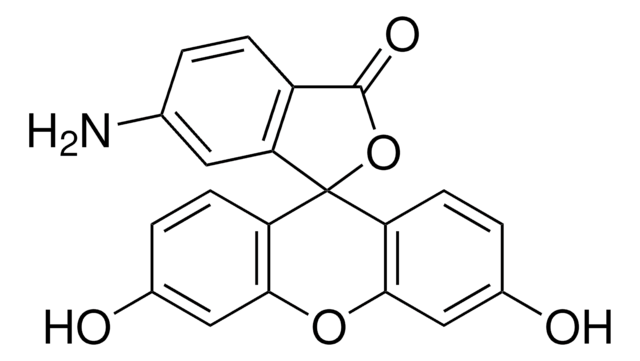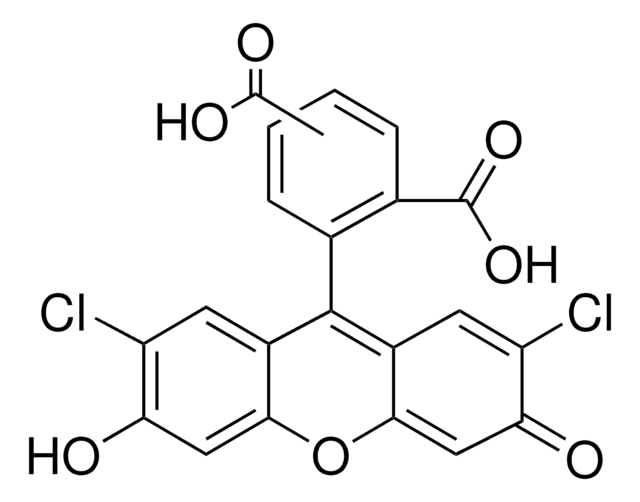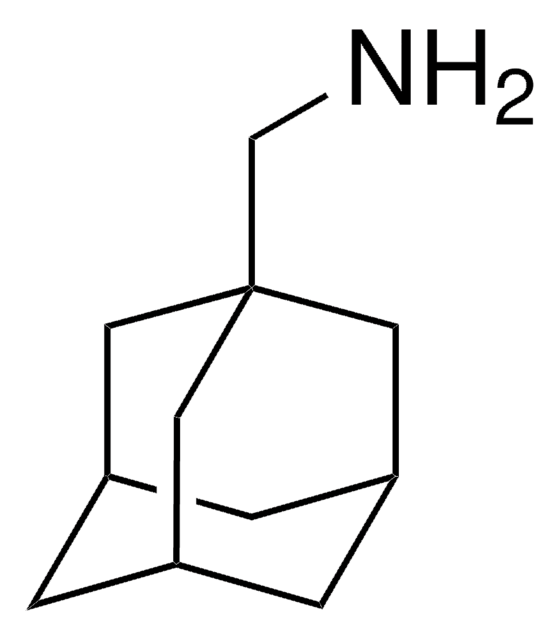17-10222
LentiBrite EB3-RFP Lentiviral Biosensor
About This Item
Productos recomendados
manufacturer/tradename
Chemicon®
LentiBrite
Quality Level
technique(s)
cell based assay: suitable
immunocytochemistry: suitable
immunofluorescence: suitable
single cell analysis: suitable
transfection: suitable
UniProt accession no.
detection method
fluorometric
shipped in
dry ice
Gene Information
human ... MAPRE3(22924)
General description
http://www.nature.com/app_notes/nmeth/2012/121007/pdf/an8620.pdf
(Click Here!)
Learn more about the advantages of our LentiBrite Lentiviral Biosensors! Click Here
Biosensors can be used to detect the presence/absence of a particular protein as well as the subcellular location of that protein within the live state of a cell. Fluorescent tags are often desired as a means to visualize the protein of interest within a cell by either fluorescent microscopy or time-lapse video capture. Visualizing live cells without disruption allows researchers to observe cellular conditions in real time.
Lentiviral vector systems are a popular research tool used to introduce gene products into cells. Lentiviral transfection has advantages over non-viral methods such as chemical-based transfection including higher-efficiency transfection of dividing and non-dividing cells, long-term stable expression of the transgene, and low immunogenicity.
EMD Millipore is introducing LentiBrite Lentiviral Biosensors, a new suite of pre-packaged lentiviral particles encoding important and foundational proteins of autophagy, apoptosis, and cell structure for visualization under different cell/disease states in live cell and in vitro analysis.
- Pre-packaged, fluorescently-tagged with GFP & RFP
- Higher efficiency transfection as compared to traditional chemical-based and other non-viral-based transfection methods
- Ability to transfect dividing, non-dividing, and difficult-to-transfect cell types, such as primary cells or stem cells
- Non-disruptive towards cellular function
EMD Millipore’s LentiBrite EB3-RFP lentiviral particles provide bright fluorescence and precise localization to enable live-cell analysis of microtubule plus-end dynamics in difficult-to-transfect cell types.
EMD Millipore’s LentiBrite EB3-RFP lentiviral particles provide bright fluorescence and precise localization to enable live-cell analysis of microtubule plus-end dynamics in difficult-to-transfect cell types.
Application
REF52 cells were plated in a coverglass chamber slide and transduced with lentiviral particles at an MOI of 20 for 24 hours. After media replacement and 48 hours further incubation, cells were imaged live by oil immersion wide-field fluorescence microscopy. The EB3-RFP displays a punctate distribution characteristic of microtubule ends.
Immunocytochemistry Comparison and Inhibitor Analysis:
HeLa cells were plated in a coverglass chamber slide and transduced with lentiviral particles at an MOI of 20 for 24 hours. After 24 hours, media was replaced and cells were then further incubated for 48 hours. EB3-RFP displays a nearly complete overlap with EB3 detected by immunocytochemical staining with rabbit polyclonal anti-EB3 (EMD Millipore cat. no. AB6033).
Additional Cell Types:
MCF7 cells were transduced with EB3-RFP lentivirus as in Figure 1 at an MOI 40 for 24 hours, then stained for tubulin. EB3-RFP displays a punctate and short linear distribution. Immunocytochemical staining with a monoclonal antibody against α-tubulin (EMD Millipore Cat. No. 05-829) reveals the typical filamentous pattern of microtubules. Overlay of EB3-RFP (red), anti-tubulin (green) and DAPI (blue) demonstrates that EB3-RFP is localized to the microtubule ends.
Hard-to-transfect Cell Types:
Primary cell type HUVEC and Human mesenchymal stem cells (HuMSC) were plated in coverglass chamber slides and transduced with lentiviral particles at an MOI of 20 and 40, respectively, for 24 hours.
Time-lapse Imaging:
REF52 cells were plated in coverglass chamber slides and transduced with EB3-RFP lentiviral particles. Images were collected every 3 seconds for a total of 2 min. Shown here are 3 sequential frames; to see the entire sequence, please visit our Cell Structure-Biosensors page.
For optimal fluorescent visualization, it is recommended to analyze the target expression level within 24-48 hrs after transfection/infection for optimal live cell analysis, as fluorescent intensity may dim over time, especially in difficult-to-transfect cell lines. Infected cells may be frozen down after successful transfection/infection and thawed in culture to retain positive fluorescent expression beyond 24-48 hrs. Length and intensity of fluorescent expression varies between cell lines. Higher MOIs may be required for difficult-to-transfect cell lines.
Cell Structure
Cytoskeleton
Components
One vial containing 25 µL of lentiviral particles at a minimum of 3 x 10E8 infectious units (IFU) per mL. For lot-specific titer information, please see “Viral Titer” in the datasheet.
Promoter
EF-1 (Elongation Factor-1)
Multiplicty of Infection (MOI)
MOI = Ratio of # of infectious lentiviral particles (IFU) to # of cells being infected.
Typical MOI values for high transduction efficiency and signal intensity are in the range of 20-40. For this target, some cell types may require lower MOIs (e.g., HT-1080, human mesenchymal stem cells (HuMSC)), while others may require higher MOIs (e.g., human umbilical vein endothelial cells (HUVEC), U2OS, HeLa).
NOTE: MOI should be titrated and optimized by the end user for each cell type and lentiviral target to achieve desired transduction efficiency and signal intensity.
Quality
Physical form
Storage and Stability
Lentivirus is stable for at least 4 months from date of receipt when stored at -80°C. After first thaw, place immediately on ice and freeze in working aliquots at -80°C. Frozen aliquots may be stored for at least 2 months. Further freeze/thaws may result in decreased virus titer and transduction efficiency.
IMPORTANT SAFETY NOTE
Replication-defective lentiviral vectors, such as the 3rd Generation vector provided in this product, are not known to cause any diseases in humans or animals. However, lentiviruses can integrate into the host cell genome and thus pose some risk of insertional mutagenesis. Material is a Risk Group 2 and should be handled under BSL2 controls. A detailed discussion of biosafety of lentiviral vectors is provided in Pauwels, K. et al. (2009). State-of-the-art lentiviral vectors for research use: Risk assessment and biosafety recommendations. Curr. Gene Ther. 9: 459-474.
Legal Information
Storage Class
10 - Combustible liquids
wgk_germany
WGK 2
Certificados de análisis (COA)
Busque Certificados de análisis (COA) introduciendo el número de lote del producto. Los números de lote se encuentran en la etiqueta del producto después de las palabras «Lot» o «Batch»
¿Ya tiene este producto?
Encuentre la documentación para los productos que ha comprado recientemente en la Biblioteca de documentos.
Contenido relacionado
Fluorescent lentiviral particles encoding important GFP/RFP fusion proteins related to autophagy, apoptosis, and cell structure that enables live cell imaging.
Nuestro equipo de científicos tiene experiencia en todas las áreas de investigación: Ciencias de la vida, Ciencia de los materiales, Síntesis química, Cromatografía, Analítica y muchas otras.
Póngase en contacto con el Servicio técnico






